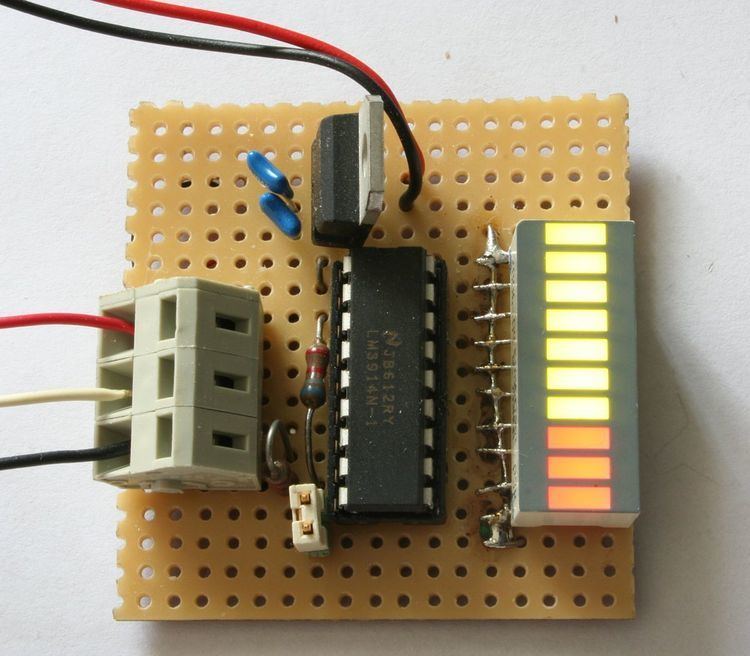 | ||
The LM3914 is an integrated circuit (IC) designed by National Semiconductor and used to operate displays that visually show the magnitude of an analog signal.
One LM3914 can drive up to 10 LEDs, LCDs, or vacuum fluorescent displays on its outputs. The linear scaling of the output thresholds makes the device usable, for example, as a voltmeter. In the basic configuration it provides a ten step scale which is expandable to over 100 segments with other LM3914 ICs in series.
This IC was introduced by National Semiconductor in 1980 and is still available as of 2013 from Texas Instruments. There are also two variants of it produced, the only difference being using 3dB logarithmic (LM3915) or VU-meter (LM3916) scale.
Features
All the devices in this group operate with a range of voltages from 3-35 V, can drive LED and VFD displays.They can provide a regulated output current between 2-30 mA to directly drive displays.
Internally, each device contains ten comparators and a resistor scaling network, as well as a 1.25 volt reference source. As the input voltage increases, each comparator turns on. The device can be configured for either a bar-graph mode, where all lower-output terminals switch on, or "dot" mode in which only one output goes on. The device is packaged in an 18 pin dual in-line package or in a surface mount leadless chip carrier.
